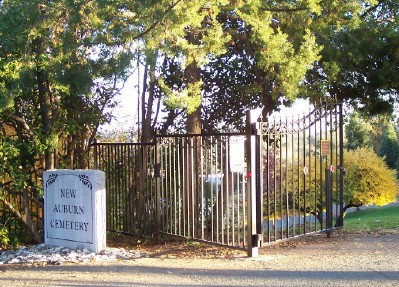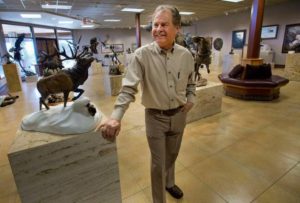In the summer of 1980, my father lost his role as a Seventh-Day Adventist minister and our family moved out of the church and to Auburn, CA, 45-minutes drive north of Sacramento, where dad set up his own non-denominational evangelical Christian foundation Good News Unlimited.
I was 14.
For the first time, I went to a non-Adventist school, Forest Lake Christian. I thought I hated the school but I probably just hated life at that time, torn away from all that was warm and familiar.
Forest Lake was a two-hour commute each way. During winter, I left home in the dark and returned home in the dark.
It was a tough year for me. I had two hours of homework a night. That Fall semester, for the first time in my life, I failed classes (Spanish and Algebra) and finished with a 1.2 GPA. I was not happy.
In the Spring semester, I failed no classes and gained a friend — Lane Van Howd.
My family had moved to a new home and Lane, a year ahead of me in school and a stratosphere above me in social status, lived about a mile away. I started getting rides to and from school with his family.
I remember Lane as always in motion, always teasing and laughing, always lifting the mood of those around him, always with the beginnings of man hair above his upper-lip. He was reckless and utterly convinced he knew better than those around him.
In January 1981, I watched the Super Bowl at his home (the Raiders crushed the Eagles). “God comes first in this home,” said his mother that day. “And sports comes second.”
In my home, by contrast, sports was regarded as idolatry and I learned to hide my interest.
Another cool thing about Lane’s home was that he could talk about girls. In my home, there was no conception of dating. When the time came, you got married, but meantime, there was no salvation allowed from the opposite sex. No banter about crushes. No compromise with the wider society.
During those first weeks together, I was a little unsure of Lane’s last name and so when my mother called that Super Bowl afternoon looking for me, she took the info I had given her and called Mrs. Van Howd “Mrs Lane”. There was an awkward conversation and when I got to the phone, my confused mother ordered me home early.
Lane’s father was Douglas Van Howd, President Reagan’s personal artist.
Every so often, good people come into my life and adopt me. Lane was such a person. The bus would drop us off in Auburn in the afternoons and while we waited for his mother, Lane would buy me cold drinks while he checked out the latest ski equipment.
Lane was at the pinacle of my world. Women found him attractive. He was smart, good and athletic. His younger sister Holly was similarly gifted. They had everything to look forward to. The world was at their feet.
Lane and his family were my first non-Adventist friends.
Ninth grade ended in June 1981 and my family moved a few miles away, foolishly buying a second home in the belief that they could quickly sell the first (that didn’t happen until 1985). I didn’t see Lane any more.
In mid-July I got word that Lane had died. He was killed in a car accident (where he was the passenger, nobody else was hurt).
My friends the Badziks (Doug was in my class and perhaps my best friend though his memories of me are not fond) picked me up to go to the funeral. I was dreading it. I had never been to a funeral of somebody my age. The Van Howds were a different type of Christian than my hyper-intellectual family, they were Pentacostal. I was scared.
The drive to the funeral reassured me. While I had been habituated that you had to keep a solemn silence at such times, I learned that day that you could talk like a normal person. You could laugh as well as cry (not that 98% of Protestants I knew would every cry at a funeral).
I was tipped off that the service would be Pentacostal and that God’s direct intervention would be sought. This was never the Adventist way and I steeled myself for displays of emotion.
Lane’s service was in a different type of church than I had ever been in. It might’ve been Assembly of God. There was an open casket. Lane looked good. He wore his Sunday best.
I don’t think I ever looked in an open-casket before. We didn’t have that custom in Australia.
Unlike many of my friends, I had been to funerals before of people I knew, but they were never my age.
The pastor invoked a more imminent sense of God than I was used to. And at the peak of his message, he said, “If you believe God can raise Lane from the dead right now, please raise you hand.”
Along with almost everyone in the church, I raised my hand, and even though I was raised with an academic approach to God, I really believed at that moment that God could raise Lane from the dead.
Closing my eyes, I prayed for God to do a miracle and to revive my friend. Then I opened my eyes and holding my breath, I stared at the coffin, waiting for a resurrection that never came.
I don’t think I was much of a comfort to Lane’s family that morning. My words were probably few and my physical expressions even fewer.
And that was the last time I spoke to them, to the Van Howds, to the good good family that had sheltered me.
I think Mrs. Nancy Van Howd called my mother a few years later to touch base.
But the pain that family experienced, I couldn’t face it.
From tenth grade on, I went to public school. There was no talk of resurrection there.
2/14/15: Artist honored to do Capitol sculpture of his friend Ronald Reagan
Van Howd’s relationship with Reagan began in 1972 when Reagan received a gift of one of Van Howd’s statues, a lion, and one of Reagan’s aides invited him to drive down from Auburn to meet the governor. The friendship lasted until the 40th president faded into dementia.
The lion was one of Van Howd’s first sculptures. Now, his pieces sell for thousands, tens of thousands and more. He favors Western scenes and characters and wildlife. He is working on an elephant, 13 feet at the shoulder, for the government of Tanzania. Reagan will stand 7.5 feet.
In 1981, at the start of President Reagan’s administration, the president asked Van Howd to become the White House artist. His first task was to sculpt a gift to be presented to the Netherlands.
As he set about working on the idea, an American Indian and an eagle, atop a piece of petrified wood from Arizona, Reagan’s counsel, Herbert Ellingwood, delivered the terrible news that Doug and Nancy Van Howd’s son, Lane, had died in a car accident in California. He was 16.
“My mind wouldn’t accept it. Why is the top man in the White House telling me this. No, no, no, that isn’t my kid.” But it was. He couldn’t complete the sculpture until 1984. Instead of being given to the Dutch, the sculpture was displayed in the Roosevelt Room.
During Van Howd’s White House visits, schedulers learned to have the president meet him at the end of the day. That way, when they talked too long as they often did, Reagan wouldn’t be late for other meetings.
“I was like a breath of fresh air for him. We would talk horses. We had great conversations. He loved art. He told me a lot of things probably people didn’t know,” like about getting bucked from a horse while riding with Mexican President José López Portillo and hitting his head. “I don’t know that that was ever publicized.”
Walk through Van Howd’s Auburn gallery and you’ll see mementos of his time with the governor who became president. There’s a photo of him giving a ram sculpted of gold with silver horns to Oliver North, and a bronze eagle to Reagan’s interior secretary, Donald Hodel. He painted the portrait of Reagan and Vice President George H.W. Bush that was on the inaugural plates.
Partisan Democrats might be upset that Reagan will stand anywhere in the Capitol, even the “lower rotunda.” Civics lessons are important, however. Reagan is important in the history of California, the nation and world. His story is worth telling and retelling, unvarnished.
We ought to teach more history. Find space for Capitol statues of Earl Warren, the only California governor who became U.S. chief justice, and Hiram Johnson, the progressive responsible for the initiative process.
The state also should reopen the joint in the basement, without four- and eight-legged vermin. Call it the Well. Maybe even serve a little whiskey or wine. Reagan would have approved. Back when he was governor, I’m told, he’d enjoy an occasional sip.


